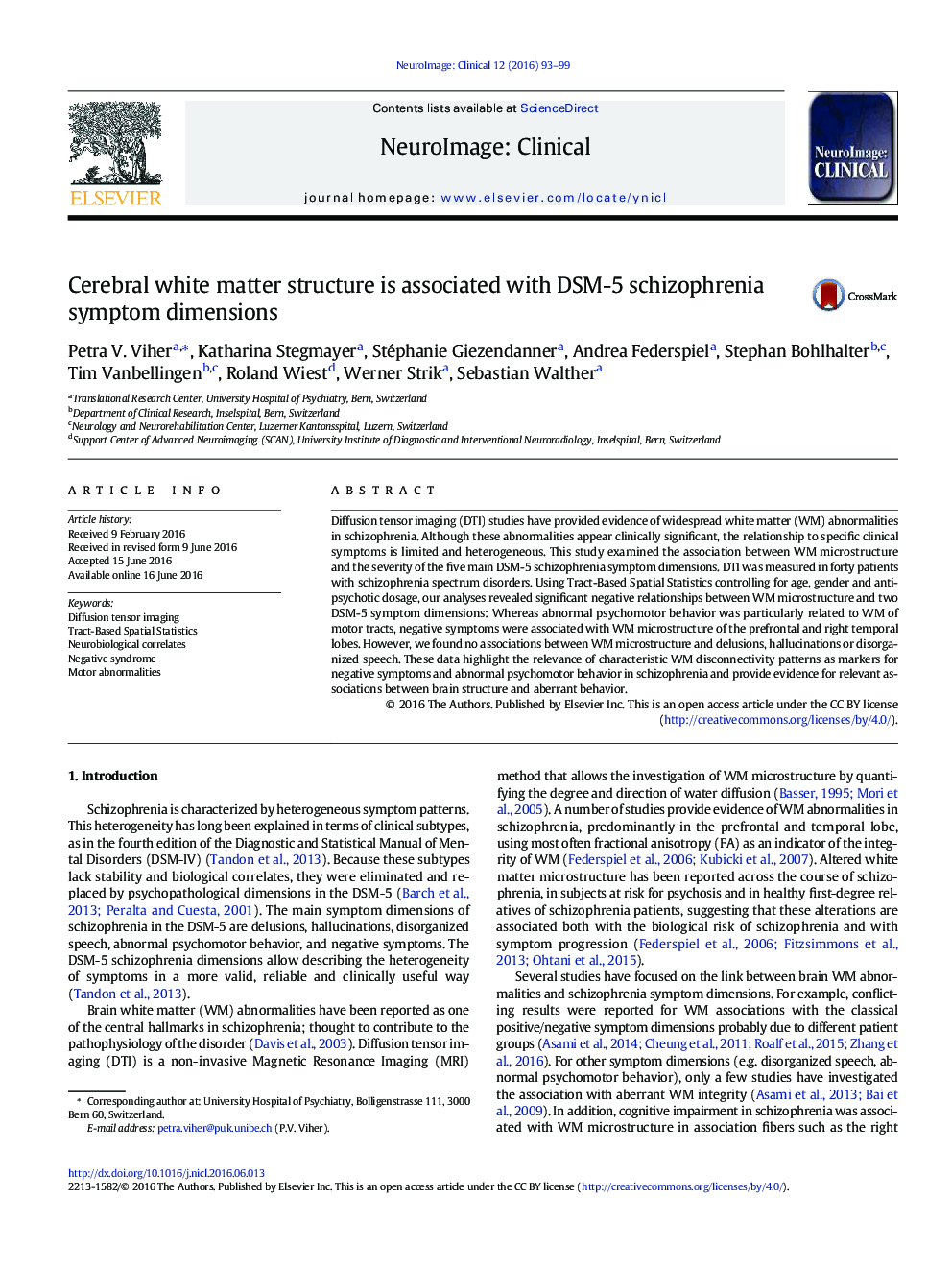| Article ID | Journal | Published Year | Pages | File Type |
|---|---|---|---|---|
| 3074794 | NeuroImage: Clinical | 2016 | 7 Pages |
•DTI study of brain-behavior associations of the new DSM-5 schizophrenia dimensions.•The severity of the DSM-5 abnormal psychomotor behavior dimension is related to white matter microstructure in motor tracts.•Associations of the DSM-5 negative symptom dimension with white matter microstructure are found in prefrontal and temporal clusters.•Characteristic patterns of white matter microstructure argue for relevant associations between brain structure and aberrant behavior in schizophrenia.
Diffusion tensor imaging (DTI) studies have provided evidence of widespread white matter (WM) abnormalities in schizophrenia. Although these abnormalities appear clinically significant, the relationship to specific clinical symptoms is limited and heterogeneous. This study examined the association between WM microstructure and the severity of the five main DSM-5 schizophrenia symptom dimensions. DTI was measured in forty patients with schizophrenia spectrum disorders. Using Tract-Based Spatial Statistics controlling for age, gender and antipsychotic dosage, our analyses revealed significant negative relationships between WM microstructure and two DSM-5 symptom dimensions: Whereas abnormal psychomotor behavior was particularly related to WM of motor tracts, negative symptoms were associated with WM microstructure of the prefrontal and right temporal lobes. However, we found no associations between WM microstructure and delusions, hallucinations or disorganized speech. These data highlight the relevance of characteristic WM disconnectivity patterns as markers for negative symptoms and abnormal psychomotor behavior in schizophrenia and provide evidence for relevant associations between brain structure and aberrant behavior.
